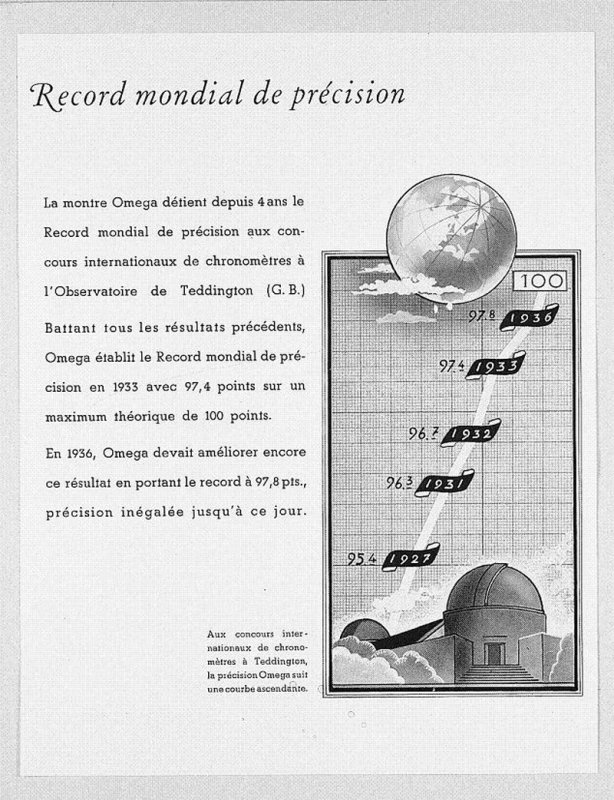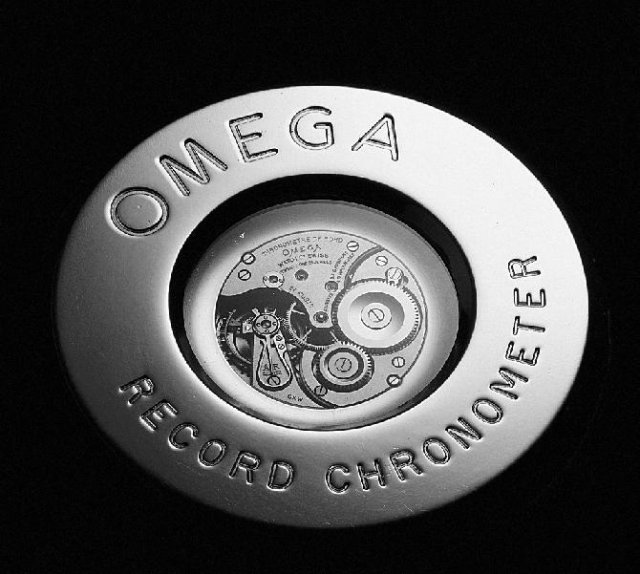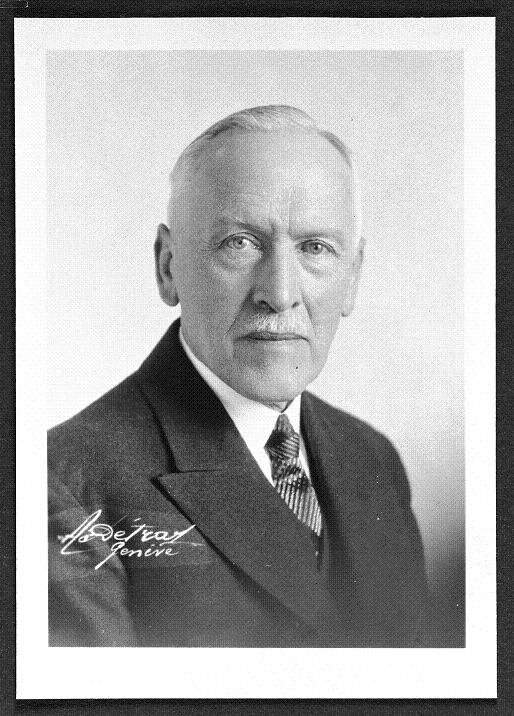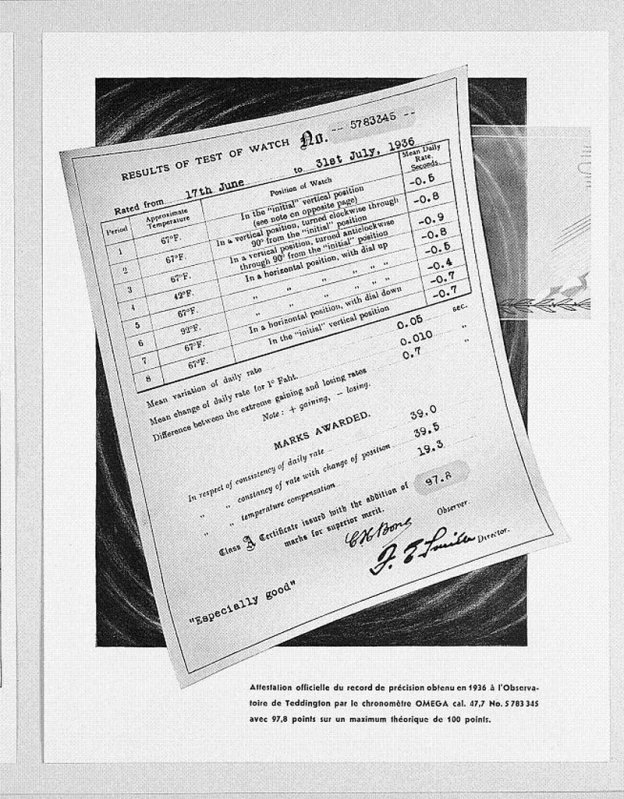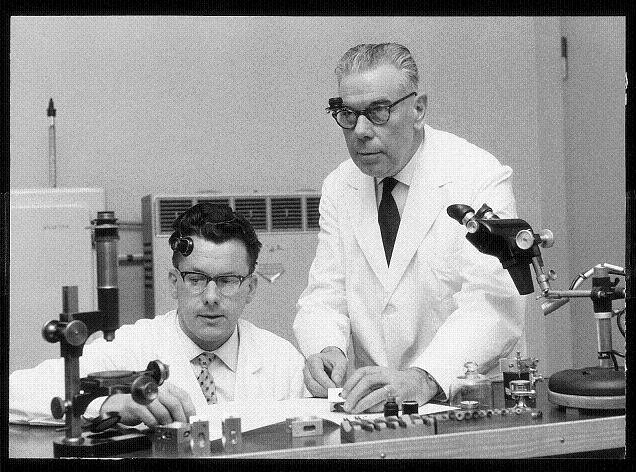
mkt33
[PuristS]
5252

Omega Central Tourbillon - Part 1: History of Omega Observatory Trials and Precision Records
Omega Central Tourbillon – Part 1: History of Omega
Observatory Trials and Precision Records
By Michael Ting M.D.
(1), Melvyn Teillol-Foo M.D. (2) and Suitbert Walter (1).
(1) –
PuristSPro.com Moderator
(2) –
ThePuristS.com Moderator
Competition breeds excellence
During the late 19th and early 20th century, manufacturers and their master watchmakers expended significant amounts of time and resources in preparation for Observatory trials held throughout Europe. Unlike today's annual watch fairs, these events were not intended to showcase new products. Instead the Observatory trials focused on the science of Chronometry and the ability to make chronometers measure time precisely.
Geneva observatory trials were exclusive for companies in the Canton of Geneva, whilst Neuenburg (French: Neuchâtel) competitions were open to all manufacturers. That is why Omega and Longines set up branches in Geneva – they wanted to take part in prestigious Geneva competitions. Geneva Observatory results are recorded under Omega Genève SA.
These trials were rigorous and they were the most exacting for the watch industry. The precision controls from the Observatories pushed everybody involved in the manufacturing process to achieve perfection because they were based solely on scientific and technical standards. Only timing mechanisms of proven design, perfect technical finish and expert regulation were chosen and given a chance to compete. After 44 days of testing with 5-positional and 3-temperature changes, the most precise chronometer won immense publicity for its manufacturer and acclaim among its peers in the horological community. Only movements were supplied for testing, as still practiced with COSC testing today. Movements were set in aluminum or wooden transport cases and fixed in square blocks for easy positional timing. The crown/stem were recessed in the transport cases so that they could be placed in any required position.
The Observatory trials were the "crown jewels" of Chronometry. The associated financial benefits gained by marketing these timing triumphs attracted large manufacturers as well as independent professional watchmakers throughout Europe. Even Japan was successfully represented by Seiko in some of these trials in the 1960s. Interestingly, only Patek Philippe and Omega participated every year in the Observatory trials. Omega's performances at these competitions garnered the company a reputation of precision and innovation. Following their repeated success in observatory trials, Omega utilized their expertise in COSC certified models until they headed the annual list of certified chronometers. For more than a decade (1958 – 1969), Omega was by far the largest manufacturer of COSC chronometers – mainly with their famous Constellation models. Never satisfied with their past achievements, Omega's quest for precision continues today with their development and incorporation of the co-axial escapement and adjustable inertial mass balance.
Figure 1:
Advertisement of Kew-Teddington 1936 World Precision Record © Omega SA
"Omega – Exact time for
life"
The company's slogan back in 1931, "Omega – Exact time for life", was not a marketing scheme but fact based on Omega's historical performance at Observatory trials. Omega's early prowess in designing and regulating timing movements was made possible by the company's incorporation of new chronometric innovations. The refinement of the Swiss straight lever escapement and the development of the Guillaume balance allowed smaller and more durable pocket watch movements to reproduce the accuracy of much larger marine chronometers. Omega's 19''' caliber pocket watch chronometer incorporated these technical improvements and coupled with the expert fine tuning by Albert Willemin, Omega's first "regleur de précision", attained the highest rating at the Neuenburg (Neuchatel in French) Observatory trials. In1919, Omega repeated this feat again when the 21''' caliber won the First Prize at the Neuenburg Observatory competition. After slight modification, this movement became Omega's famous Caliber 47.7. In 1925, a Cal. 47.7 regulated by Gottlob Ith won First Prize with 95.9 out of 100 points at Kew-Teddington Observatory trials.
Figure 2: Cal. 47.7 © Omega SA
Figure 3:
Gottlob Ith (Omega regleur de précision 1920 – 1956) © Omega SA
Further refinements of this movement and expert regulation by Alfred Jaccard
allowed Omega to break precision records at the Geneva Observatory in 1931. By
winning First Prize in all 6 categories of these trials, Omega's prowess
as a precision timing company was assured and it was chosen as the official
timekeeper for the U.S. Olympic Games in 1932. This was the first time that a
single company was entrusted with this important task. The Cal. 47.7 achieved
near perfection in 1936 when it scored 97.8 points of 100, a precision record
which has never been broken.
Figure 4:
Alfred Jaccard (Omega regleur de précision 1929 – 1953) © Omega SA
World
Record Breaker 1933 & 1936
In 1941, Neuchâtel had a wristwatch chronometer category of 34mm maximum size.
This was reduced to 30mm in 1948 to match the Geneva Category D with and added
surface area limitation for shaped calibers of 707 sq.mm. In 1944, Geneva added a Category D
to include timing movements less than 30mm in diameter. However, Omega was
already five years ahead of their time. Applying experience gained from the
observatory trials with pocket watch movements, Omega had designed and created
the superlative Cal.
30mm for commercial use in wristwatches in 1939. Exceptional in regulatory
performance and durability, the Cal.
30mm set a new precision record at Kew-Teddington at its first outing in 1940.
Omega even beat Rolex, which at that time was a chronometer specialist rather
than a mass manufacturer. At the Geneva Observatory Category D competition in
1945, the legendary Alfred Jaccard regulated an Omega Cal. 30mm to 1st Place, besting
five watches from Patek Philippe and one from Rolex. Many companies did not
have large wristwatch movements and had to outsource ebauches for the
observatory trials – like the Peseux 260 – as used by Ulysse Nardin
and Movado.
Figure 5:
Results of Test Watch in 1936 © Omega SA
Despite the success of the Cal. 30mm, Omega sought to improve the accuracy of their wristwatches by applying existing horological technology in novel ways throughout the 1940's. Over a century earlier, the Régulateur à Tourbillon had been invented in 1801 by Abraham-Louis Breguet. The purpose of the tourbillon is to compensate for the negative influence of the gravity and to eliminate any residual effects caused by out-of balance forces on the escapement of a watch. Temperature compensation and especially secondary temperature error were valued highly in the observatory requirements. The importance of this may be surmised from the use of a split bimetallic Guillaume balance despite the availability of self-compensating hairsprings. Split bimetallic balance wheels are a bit tricky because the two opposed parts of the rim tend to become out-of-poise in certain areas – a tourbillon would be ideally suited to solve this problem.
In preparation for
the Observatory trials, Omega's technicians sought to miniaturize the
tourbillon for a small series of wristwatch movements. In 1947 Omega became the
second watchmaker ever to build a tourbillon wristwatch. Omega's archive
credits Lip, a French watchmaker, for building a rectangular tourbillon
wristwatch prototype earlier in 1930. Our research revealed that there were
small and potentially wristwatch-sized movements made as one-off pieces e.g.
James Pellaton's 10 ½''' (23.7mm) or Robert
Charrue's smaller 8 ¾''' movement. Girard-Perregaux made
a 30mm three-bridge tourbillon with detent escapement in 1890 –
tourbillon made by Ernest Guinand. The Lip wristwatch was actually Lip-ebauche
based but constructed by Edouard Belin of the Besancon Watchmaking
School.
Figure 6: Cal. 30I Tourbillon ©
Omega SA
Omega entrusted the design of their tourbillon with a cage revolving every 7-½
minutes to Marcel Vuilleumier, Director of the Watchmaking School
at Le Sentier. Notably, Vuillemier was also the creator of such wondrous things
as a double balance, differential tourbillon! Each Omega tourbillon was
handcrafted by Jean-Pierre Mathey-Claudet the prototype builder, and regulated
by Alfred Jaccard. Omega made a small series of 12 movements (serial numbers
10595933-10595944). Many of these were sent to competitions in Geneva and Neuenburg
during 1947-1951. Despite high expectations the initial results for these
tourbillons at competition were not as good as the Cal. 30mm. Finally there was victory in 1950
when an Omega tourbillon achieved 1st place followed by an Omega Cal. 30mm in
2nd place and a Patek Philippe in 3rd place.
Because a consumer market for tourbillon wristwatches did not exist, those
tourbillon movements were only designed for observatory competitions and Omega
stopped production after the initial series. In 1987, seven movements from that
1947 series of chronometers had their movements entirely refurbished,
rhodium-plated, angled, polished, decorated with 'Côtes de Genève'
and fitted into either an 18K gold or sterling silver case with transparent
back and a push-button for time-setting. This setting button was protected by
an 'olivette'. The experience acquired by the regulation and
fine-tuning of these watches, however, helped Omega achieve new precision
records at Observatory trials and dramatically improved the accuracy of their
consumer model wristwatches.
Figure 7:
Jean-Pierre Matthey-Claudet, prototype builder of Cal. 30 mm & Cal. 30I
tourbillon © Omega SA
Figure 8:
Advertisement of the Precision Record (1950) with Tourbillon Cal.30I © Omega SA
The link between the past and the
future
In preparation for their 100th anniversary celebration, Omega looked into their past for a project that would serve as a fitting tribute to this special milestone. The watchmakers were inspired by the company's historical successes with tourbillons but needed to differentiate the project from existing tourbillon wristwatches on the market. Remaining true to Omega's spirit of innovation and precision, an ingenious team of engineers designed a completely new movement, creating the world's first central tourbillon wristwatch in 1994. With its whirling-dervish tourbillon cage, pulsing and dancing in the center of the wristwatch and its outwardly extending hour and minute hands, one cannot help but imagine that the watch is alive. It conjures up an image of a tiny mechanical spirit eager to share its story and secrets. The complete evolution of this engineering marvel, from conception to production, will be revealed in this multi-part series of articles on the 'Omega Central Tourbillon'.
Important reference dates for the
Omega precision records:
1894: Creation
of the famous 19''' caliber named Omega.
The company
is renamed after this famous caliber in 1848 from 'Louis Brandt et
Frères'.
Omega
participates for the first time at observatory trials in Neuenburg (French:
Neuchâtel).
Albert
Willemin, the first "regleur de précision" at Omega, regulated the
movement.
1911: Albert Willemin leaves Omega and is replaced by Werner-A. Dubois.
1918: Werner-A. Dubois leaves Omega (he joins Paul Ditisheim) and is
replaced by Carl Billeter.
1919: 1st Prize at observatory trials in Neuenburg with a
21''' caliber.
This
caliber was slightly modified to become the famous Cal. 47.7 later.
1920: Gottlob Ith replaces Carl Billeter.
1922: Omega participates for the first time at observatory trials in
Kew-Teddington (achieved 3rd place).
1925: 1st place at observatory trials in Kew-Teddington with a Cal. 47.7
(95.9
of 100 points ex aequo with Ulysse Nardin); Gottlob Ith regulated the movement.
1929: Alfred Jaccard joined Omega.
1930: 1st place at observatory trials in Kew-Teddington (96.3 of 100
points ex aequo with Movado);
Alfred Jaccard
regulated the movement.
1931: Omega achieves 1st place in all 6 categories at observatory trials
in Geneva;
Alfred
Jaccard regulated the movements.
1933: A Cal. 47.7 regulated by Alfred Jaccard achieved the precision
record at observatory trials.
Kew-Teddington; 97.4
points of 100.
1936: Another Cal. 47.7 regulated by Alfred Jaccard achieved the
precision record of 97.8 points of 100.
Kew-Teddington.
This record was never broken even until 1965.
1937: 1st place at Kew-Teddington with 97.3 points.
1938: 1st place at Kew-Teddington with 97.7 points.
1939: Creation of the Cal. 30 (the first 30mm caliber).
1940: 1st place with Cal.
30mm at Kew Teddington; movement regulated by Alfred Jaccard.
1943:
Launch of the 30mm caliber 30T2 (first rose gold-plated Omega
movement).
1945: 1st place with 30mm caliber at the observatory in Geneva; movement regulated by Alfred Jaccard.
1947: Creation of the first Omega tourbillon wristwatch movement (Cal. 30I).
Specially
developed for the observatory trials (only 12 pieces made).
1948: 1st place at observatory trial in Neuenburg for 30mm caliber.
1st time
non-Swiss companies allowed to take part.
1950: 1st place for tourbillon Cal.
30I at Geneva Trials; regulated by Alfred Jaccard.
Joseph Ory
joins precision timing department after being Trainer to women timers
(regleuse).
1951/2:1st place at the observatory trials in Geneva.
1953: Alfred Jaccard died.
1954: New record in Geneva
by Gottlob Ith.
1955: Two new records at Neuenburg by Gottlob Ith.
1956: Gottlob Ith died aged 66 years; Joseph Ory takes over as head of
department.
Two
1st places at observatory trials in Neuenburg.
1958: New record in Geneva
movements regulated by Joseph Ory.
Creation of
competition Cal.
30GD – a 30mm caliber with better mainspring and higher frequency
(25,200
instead of 18,000 vph).
This unusual
frequency is used again today for the latest Co-Axial movements.
Figure 9: Cal. 30GD © Omega SA
1959: Two
records in Neuenburg and one new record in Geneva; movements regulated by Joseph Ory.
1960: One new record in Geneva,
One new record in Neuenburg and also 1st place in Neuenburg.
Movements
regulated by Joseph Ory.
1961: Two new records in Geneva
by Joseph Ory.
The first
four places for the 'single pieces' category in Geneva are occupied by Omega.
1962: 2nd, 3rd and 4th places for Omega, which decides to create a new
caliber.
1963: Two 1st places in Geneva
and Neuenburg.
Movements
regulated by Joseph Ory and André Brielmann.
Figure 10:
Joseph Ory (right) and André Brielmann © Omega SA
1964: New
record in Neuchatel by Joseph Ory.
1965: Omega occupies 2nd to 9th places (1st place goes to Zenith).
Pierre
Chopard was tasked to create a new Caliber for the observatory trials.
Cal. E11 had
a very unusual shape to take a very big barrel and its mainspring.
It never
entered competition because quartz movements arrived in 1967.
Figure 11:
Cal. E11 © Omega SA
1966: Three
new records for Omega (two in Neuenburg, one in Geneva).
1967: Quartz movement Beta 1 (later Beta 21) included in the same
category as mechanical movements.
Last year
that Omega competed with mechanical movements as "old
technology" not comparable
with quartz.
Figure 12:
Rating certificate obtained for the Cal.
30 mm (1967) © Omega SA
1968: Omega
enters with a tuning fork movement regulated by André Brielmann for a new
record.
1969: Two new records for the tuning fork movements regulated by André
Brielmann.
1970: One new record for the tuning fork movement regulated by André
Brielmann.
1971: Two new records for the tuning fork movements regulated by André
Brielmann.
1972: André Brielmann retires.
To be
continued in 'Omega Central Tourbillon
– Part 2…
The authors
acknowledge the kind assistance of the 'Cellule Haut de Gamme',
Museum and Press Office of Omega SA with the preparation of this article. The
copyright of archive photographs from Omega SA is acknowledged and annotated.
Other Article-specific Text and Photographs Copyright is assigned to PuristSPro.com , 2007. All
rights reserved.

